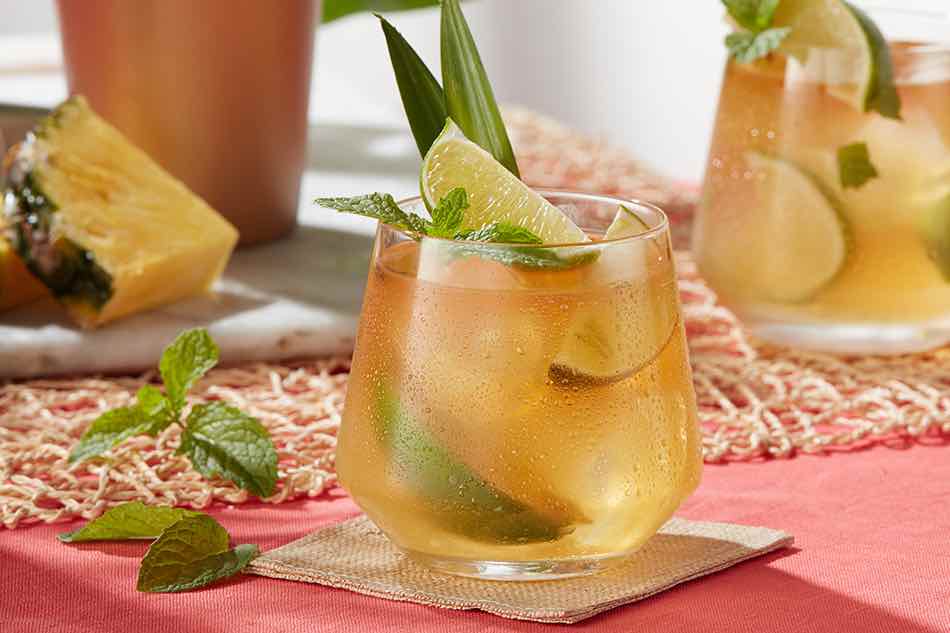Recently we delved into the surprisingly rich history of using whiskey in Tiki drinks. Today we’re returning to the present to consider what qualities make a whiskey a slam-dunk for use in Tiki or tropical-style cocktails (which are not necessarily the same thing), and what bottles you might wish to utilize for the endeavor.
Jane Danger, who works as the National Mixologist for Pernod Ricard, offered this primer for proper whiskey-picking.
“When making a tropical-style cocktail, you look for a few things. One would think you need a scotch whisky that tastes like a rum, but that’s not necessarily true. Tropical flavors are often big and bold when used in Tiki-style cocktails, with full-flavored spices added as well. That means you need to have a scotch whisky that can play the balancing act. The art of many Tiki drinks is creating a new flavor in harmony with each other, enhancing the notes you choose to pick out.”
To set that balance, Danger recommends two expressions from Glenlivet: Glenlivet Caribbean Reserve, and Glenlivet Founder’s Reserve.
“The Caribbean Reserve has a natural head start by being aged in used rum casks. This pulls forward notes that are commonly used in tropical drinks: banana into extra-light molasses that tastes like toffee, flavors of mint and vanilla, followed up by Mandarin orange that is floral, vanilla and spicy,” Danger says.
As for the Founder’s Reserve, which is aged in traditional oak and first-fill American oak casks, Danger describes it as being “plentiful with vanilla and orange,” but that it also “features mint on the nose and palate, along with a grassy note of stone fruit leaning the way of a rhum agricole.”
Megan Coyle, who works as a Brand Relations Manager for the Gallavant Group and counts over 20 years of bartending experience, believes it’s a matter of playing to the whiskey’s existing strengths, whatever their character.
“I feel like Tiki is less about finding the perfect base liquor and more about the subtle interplay of flavors,” she says. “Tiki drinks find their success in their nuance and transportive properties. I tend to use lighter, more fruit-forward whiskies, but that is just my personal preference. I have had some success with smoky, rich scotches as well.”
In particular, she leans into Rampur’s Double Cask, a single malt Indian whisky that is aged in bourbon barrels and sherry casks. “It has a really tropical and honeyed flavor profile which makes it an easy plug and play for a lot of existing recipes. I love it in Zombie variations or replacing rum in the classic Mai Tai.”
She’s also partial to Rampur’s Asava, which matures in Indian cabernet sauvignon barrels, and according to Coyle, possesses “a really nice, spicy dryness that holds hands with cinnamon and falernum beautifully.”
Looking at the other side of the world (and the land of “whiskey” with an “e”), Coyle holds up Egan’s Fortitude as another attractive option. “The aging in PX casks imparts that fruity, floral note that blends so well in tropical beverages,” Coyle says. “Fortitude is great in a Boo Loo, a pineapple loaded drink for two. In this I would recommend using both rum and whiskey in the Boo Loo, which is also a great introduction for those who are a bit reluctant to steer completely away from sugarcane spirits.”
While a professional recommendation is always appreciated, don’t feel like you must limit yourself to the options above. After all, Tiki and tropical drinks—and for that matter, the cocktail itself—would have never arisen without curiosity and experimentation.
“Truly, there is no wrong answer,” Coyle says. “Use what you love most! Break all the rules! That is where the joy of discovery is found.”
But should you wish to have some starting instructions on how to mix whiskey with Tiki/tropical ingredients, try these recipes from Coyle and Danger.



